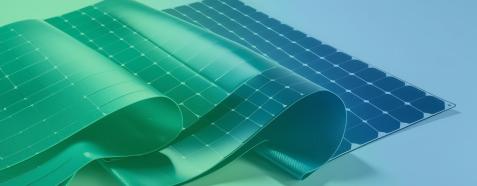Ultra-Light, High-Efficiency Solar Technology
Solar panels that can be used in space or on flexible surfaces like clothing or drones need to be lightweight, durable, and able to work in harsh environments. Most current materials are either too heavy or not strong enough to survive these conditions. Tulane researchers are designing new solar materials that are thin, flexible, and efficient enough to generate power in places where traditional panels cannot be used.
The following technologies are offered as a “bundle” or can be pursued individually.
- Adaptive Metalens Technology
- Hybrid Solar Panel Technology for Enhanced Energy Capture
- Ultra-Light, High-Efficiency Solar Technology
- All-in-One Solar Energy Collection and Storage Solution
- Dual Solar Energy Collector
- Liquid-Cooled Hybrid Solar Technology
- Advanced Cooling System for High-Performance Solar Panels

The Problem
Solar panels that can be used in space or on flexible surfaces like clothing or drones need to be lightweight, durable, and able to work in harsh environments. Most current materials are either too heavy or not strong enough to survive these conditions. There is a need for new solar materials that are thin, flexible, and efficient enough to generate power in places where traditional panels cannot be used.
The Solution
Tulane researchers are creating a new approach that aims to solve a significant challenge by 2D Schottky-junction molybdenum disulfide (MoS2) materials for solar energy conversion generated using chemical vapor deposition (CVD) to scale to large areas at low cost. The materials comprise titanium (Ti) and platinum (Pt) electrodes with a work function offset to enable charge separation. The technology is at a laboratory testing stage of development, where the inventors created an early prototype and showed it could convert sunlight to power with an efficiency of 0.0005% and a specific power of 1.58 kW/kg. These devices have been integrated to ultrathin flexible substrates and demonstrated to sustain performance after bending tests and after exposure to radiation similar to that in space.
The Opportunity
This technology offers lightweight, flexible, and radiation-resistant solar conversion, making it well-suited for aerospace (satellites, CubeSats), defense (portable power, drones), and wearable electronics. Its unique properties open opportunities in markets that demand advanced, adaptable materials, with space and defense industries as ideal early customers.



